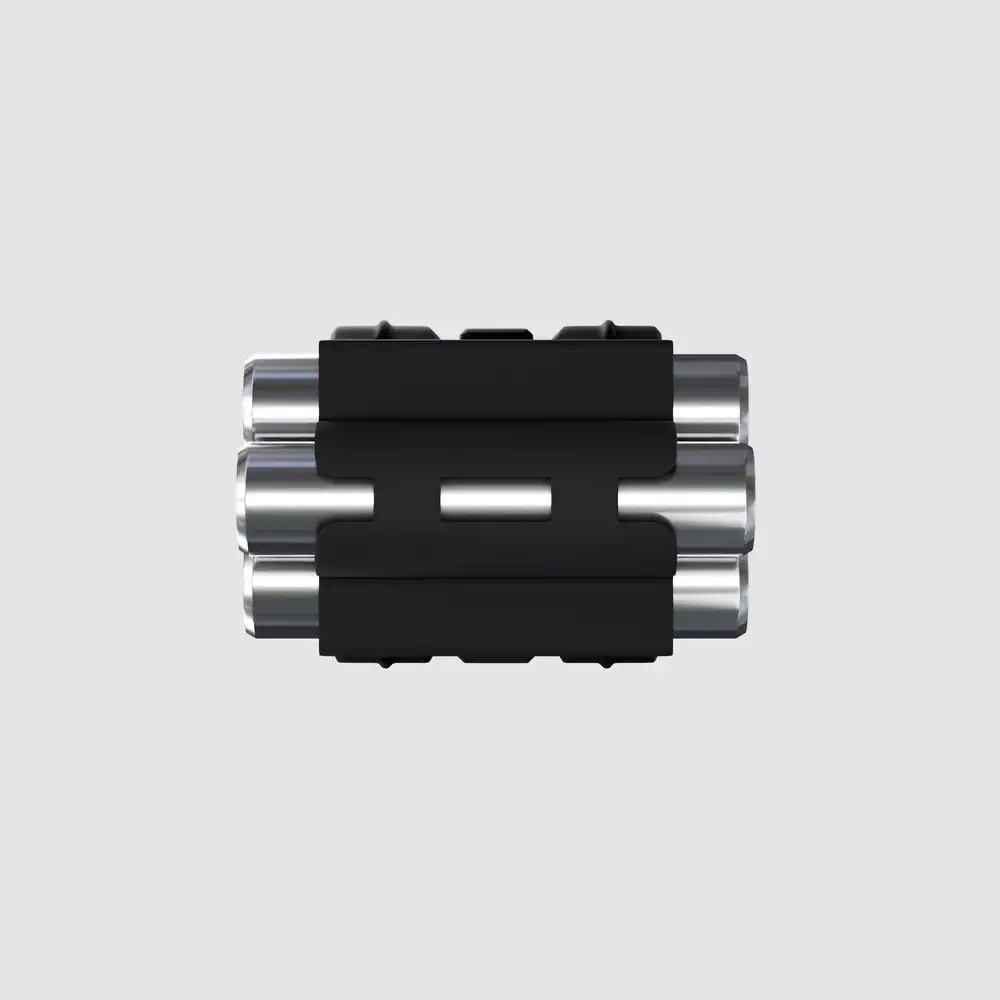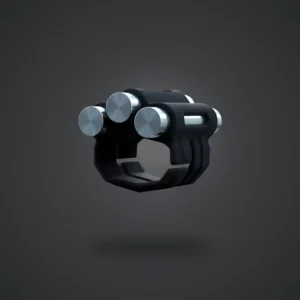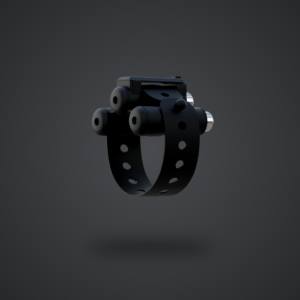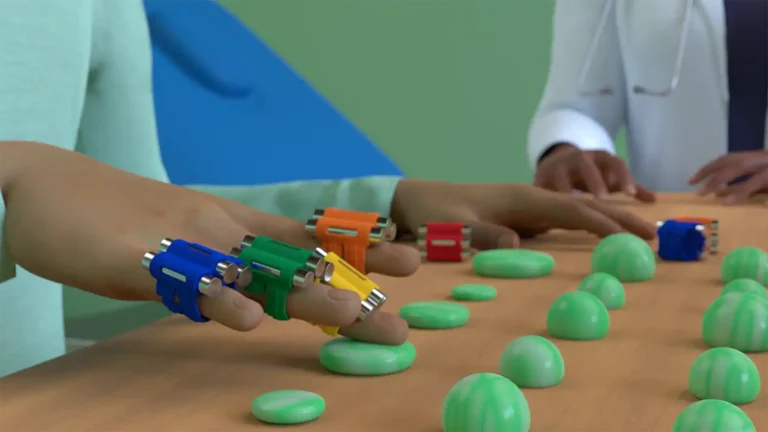Are you looking to enhance your finger dexterity? Finger weights offer a unique solution for improving hand function and grip strength. This article explores the benefits of finger weights, effective techniques for their use, and safety measures to consider. Whether you’re a musician, athlete, or recovering from an injury, you’ll learn how finger weights can boost your hand performance. For more information or to buy FingerWeights, visit FingerWeights.com.
Understand the Importance of Finger Weights for Dexterity Enhancement
Finger weights play a crucial role in enhancing dexterity and fine motor skills. This section explores the definition of dexterity, its importance in daily life, and how finger weights can improve hand control. It also examines the link between strength and dexterity, reviews scientific studies, and highlights real-world applications of improved dexterity.
Define Dexterity and Its Role in Everyday Activities
Dexterity refers to the skill and coordination in performing tasks, especially with the hands. It involves precise movements and fine motor control, allowing individuals to manipulate objects with ease. In everyday activities, dexterity plays a crucial role in tasks like writing, typing, buttoning clothes, or using utensils.
Finger weights can enhance dexterity by providing targeted resistance training to the fingers and hands. By strengthening these muscles, individuals can improve their control and precision in various activities. This increased hand function can lead to better performance in both daily tasks and specialized skills, such as playing musical instruments or excelling in sports.
Identify the Benefits of Developing Finer Motor Skills
Developing finer motor skills through finger weights offers numerous benefits. Users can experience improved hand coordination and precision, leading to enhanced performance in tasks requiring delicate movements. This can be particularly beneficial for musicians, artists, and professionals who rely on manual dexterity in their work.
Finger weights also contribute to increased hand strength, which can help prevent fatigue during repetitive tasks. This improved endurance can lead to better productivity and reduced risk of strain-related injuries. Additionally, individuals recovering from hand injuries may find finger weights useful in their rehabilitation process, helping to regain lost dexterity and strength.
Explore How Finger Weights Facilitate Better Hand Control
Finger weights facilitate better hand control by providing targeted resistance during finger movements. This resistance strengthens the small muscles in the hands and fingers, improving their ability to perform precise actions. Users can expect enhanced grip strength, increased finger independence, and improved overall hand function.
Regular use of finger weights can lead to more efficient neural pathways between the brain and hand muscles. This improved neuromuscular connection results in smoother, more controlled movements. As users progress in their training, they may notice improvements in tasks requiring fine motor skills, such as typing, playing musical instruments, or handling small objects:
| Benefit | Description |
|---|---|
| Increased Strength | Finger weights build muscle in hands and fingers |
| Improved Dexterity | Enhanced ability to perform precise movements |
| Better Coordination | Smoother interaction between brain and hand muscles |
Discuss the Relationship Between Strength and Dexterity
Strength and dexterity share a symbiotic relationship in hand function. Finger weights help build strength in the small muscles of the hands and fingers, which in turn supports improved dexterity. As these muscles become stronger, they can perform more precise and controlled movements, enhancing overall hand function.
However, balance is key. Excessive strength without proper control can hinder fine motor skills. Finger weights provide a targeted approach to strength training, allowing users to develop both strength and control simultaneously. This balanced development leads to improved dexterity in various tasks:
| Aspect | Impact on Dexterity |
|---|---|
| Muscle Strength | Enables sustained precise movements |
| Muscle Control | Allows for finer, more accurate movements |
| Endurance | Supports prolonged dexterous activities |
Review Scientific Studies on Finger Weight Usage
Scientific studies on finger weight usage have shown promising results in improving hand dexterity and strength. Research conducted at a leading university found that participants who used finger weights for six weeks experienced a 15% increase in grip strength and a 20% improvement in fine motor skills compared to the control group.
Another study focused on musicians using finger weights as part of their practice routine. The results indicated a significant enhancement in finger independence and speed, particularly in pianists and guitarists. These findings suggest that finger weights can be an effective tool for enhancing dexterity across various disciplines:
| Study Focus | Key Findings |
|---|---|
| General Population | 15% increase in grip strength, 20% improvement in fine motor skills |
| Musicians | Enhanced finger independence and speed, especially for pianists and guitarists |
Examine Real-Life Applications of Enhanced Dexterity
Enhanced dexterity through finger weight training has practical applications in various fields. Musicians benefit from improved finger strength and control, allowing for more precise and fluid performances on instruments like piano, guitar, and violin. Athletes in sports such as rock climbing, tennis, and basketball experience better grip strength and hand coordination, leading to improved performance and reduced risk of injury.
In the workplace, professionals who rely on manual dexterity, such as surgeons, dentists, and mechanics, can perform their tasks with greater precision and efficiency. Everyday activities also become easier for those with enhanced dexterity, from typing on a computer to cooking meals or engaging in hobbies like knitting or model building. These real-life applications demonstrate the wide-ranging benefits of using finger weights to improve hand function and dexterity.
Discover Effective Techniques for Using Finger Weights
Effective techniques for using finger weights enhance dexterity and strength. This section covers exercises for beginners and intermediates, incorporating weights into hand workouts, maintaining proper form, monitoring progress, and adjusting weight levels. These methods help users maximize the benefits of finger weights for improved hand function.
Start With Basic Finger Weight Exercises for Beginners
Beginners can start with simple finger extensions using lightweight finger weights. Users should place the weights on their fingertips and slowly extend their fingers, holding the position for a few seconds before relaxing. This exercise targets the extensor muscles and helps improve finger control.
Another effective beginner exercise is finger flexion. With weights attached, users can practice curling their fingers towards their palm, then slowly straightening them. This movement strengthens the flexor muscles and enhances overall finger dexterity. Starting with 5-10 repetitions per finger allows beginners to build strength gradually without risking strain.
Progress to Intermediate Exercises for Increased Challenge
As users become comfortable with basic exercises, they can progress to more challenging intermediate techniques. One effective method involves performing finger waves, where users extend and flex their fingers sequentially while wearing weights. This exercise enhances finger independence and coordination, crucial for activities like typing or playing musical instruments.
Another intermediate exercise is the finger spread. Users place their hand flat on a surface with weights attached, then spread their fingers as wide as possible before bringing them back together. This movement strengthens the muscles between the fingers, improving overall hand dexterity and grip strength. Gradually increasing repetitions and weight can further challenge users as they advance.
Incorporate Finger Weights Into Routine Hand Workouts
Incorporating finger weights into routine hand workouts enhances overall hand strength and dexterity. Users can add weighted finger exercises to their existing hand routine, performing them between sets of regular exercises. This integration allows for a comprehensive workout that targets both large muscle groups and smaller finger muscles.
A balanced hand workout with finger weights might include exercises like wrist curls, grip strengthening, and finger extensions. By alternating between these exercises, users can develop strength and dexterity throughout their entire hand. This approach ensures a well-rounded training regimen that improves hand function for various activities.
Understand the Importance of Proper Form During Exercises
Proper form is essential when using finger weights to maximize benefits and prevent injury. Users should maintain a relaxed grip on the weights, avoiding excessive tension in the hand and wrist. This allows for smooth, controlled movements that target the intended muscle groups effectively.
Users should also pay attention to their range of motion, ensuring they perform exercises through their full natural range without overextending. Slow, deliberate movements help maintain control and engage the muscles more effectively than rapid, jerky motions. Regular practice with proper form leads to better results and reduces the risk of strain or discomfort.
Monitor Your Progress With Structured Practice Sessions
Structured practice sessions help users monitor their progress with finger weights effectively. By setting specific goals and tracking improvements, individuals can stay motivated and adjust their training as needed. Users can record the weight used, number of repetitions, and duration of exercises to measure progress over time.
Regular assessments of hand strength and dexterity provide valuable insights into the effectiveness of finger weight training. Simple tests, such as timing how quickly one can type a paragraph or measuring grip strength with a dynamometer, offer concrete data to evaluate improvement. These structured sessions allow users to identify areas for further development and celebrate their achievements.
Adjust the Weight Based on Individual Strength Levels
Adjusting finger weight levels based on individual strength is crucial for effective training. Users should start with lighter weights that allow them to complete 10-15 repetitions with proper form. As strength improves, they can gradually increase the weight to maintain an appropriate level of challenge.
Regular assessment helps determine when to adjust weights. Users can test their progress by attempting exercises with slightly heavier weights. If they can comfortably perform 15-20 repetitions, it’s time to increase the weight. This progressive approach ensures continuous improvement in finger strength and dexterity.
Explore Different Types of Finger Weights Available

OG2
The OG2 features an innovative one-piece design ensuring a perfect fit for virtually any finger size. Each unit is fully adjustable, allowing precise customization. Designed for comfort and stability, it stays securely in place during light to moderate activities.
Finger weights come in various types, each designed to enhance dexterity. This section examines different materials, sizes, and designs to help users find the ideal option. It covers versatile models, user feedback, custom solutions, and price ranges, providing a comprehensive overview of available finger weight options for improving hand function.
Compare Materials and Designs for Optimal Performance
Finger weights are available in various materials, including silicone, neoprene, and metal. Silicone weights offer flexibility and comfort, making them ideal for extended use. Metal weights provide more resistance in a compact form, suitable for users seeking intense workouts.
The design of finger weights varies from individual rings to full-hand gloves. Ring-style weights allow for targeted training of specific fingers, while glove designs distribute weight across the entire hand. Some models feature adjustable weights, enabling users to customize their training as they progress in strength and dexterity.
Determine the Best Finger Weight Size for Your Needs
Selecting the right finger weight size depends on the user’s hand dimensions and strength level. Users should measure their finger circumference and length to find weights that fit snugly without constricting blood flow. Beginners often benefit from lighter weights, typically ranging from 0.25 to 0.5 ounces per finger, allowing for proper form and technique development.
As users progress, they can gradually increase the weight size to challenge their fingers further. Intermediate and advanced users might opt for weights between 0.75 to 1.5 ounces per finger. It’s essential to listen to one’s body and adjust the weight size accordingly to prevent strain or injury while maximizing dexterity improvements.
Discover Versatile Finger Weight Options for All Users
Versatile finger weight options cater to users of all skill levels and hand sizes. Adjustable weights allow users to modify resistance as they progress, making them suitable for beginners and advanced users alike. Some models feature interchangeable weight components, enabling users to customize their training experience.
Multi-purpose finger weights serve various applications beyond strength training. These weights can aid in rehabilitation exercises, enhance musical instrument practice, or improve sports performance. Users can choose from options that target specific fingers or full-hand designs that provide overall resistance:
- Adjustable weights for progressive training
- Interchangeable components for customization
- Rehabilitation-focused models
- Musician-specific finger weights
- Sports performance enhancers
Review User Feedback on Popular Finger Weight Models
User feedback on popular finger weight models provides valuable insights into their effectiveness and usability. Many users report significant improvements in hand strength and dexterity after consistent use. Some highlight the comfort and adjustability of silicone-based weights, while others praise the durability of metal options.
Reviews often mention the importance of proper sizing and gradual weight progression. Users recommend starting with lighter weights and increasing resistance as strength improves. Feedback also emphasizes the versatility of certain models, with users applying them to various activities such as music practice, sports training, and physical therapy:
- Comfort and fit are top priorities for users
- Adjustable models receive positive feedback for versatility
- Durability is a key factor in user satisfaction
- Users appreciate weights that allow for gradual progression
- Versatility across different activities is highly valued
Identify Custom Solutions for Specific Dexterity Goals
Custom finger weight solutions cater to specific dexterity goals across various professions and activities. Musicians can find weights designed to target individual fingers, enhancing their ability to play instruments with greater precision. Athletes in sports like rock climbing or tennis benefit from weights that improve grip strength and finger endurance.
For rehabilitation purposes, custom finger weights offer adjustable resistance levels to accommodate different stages of recovery. These specialized weights often come with ergonomic designs to ensure comfort during extended use. Users can select weights that focus on particular finger movements or hand functions relevant to their goals:
- Musician-specific weights for improved finger speed and independence
- Sports-oriented weights for enhanced grip strength and control
- Rehabilitation weights with variable resistance for gradual recovery
- Occupation-specific weights for professions requiring fine motor skills
- Hobby-focused weights for activities like knitting or model building
Understand the Price Range and Investment Value
Finger weights range in price from $10 to $100, depending on the material, design, and features. Basic models made of silicone or neoprene typically cost $10 to $30, offering good value for beginners. Premium options with adjustable weights or specialized designs for specific activities can cost $50 to $100, providing advanced features for serious users.
The investment value of finger weights depends on individual goals and usage frequency. Regular users often find the benefits in improved dexterity and hand strength justify the cost. For professionals relying on manual dexterity, high-end models can be a worthwhile investment in their career. The price-to-value ratio varies based on user needs:
| User Type | Recommended Price Range | Expected Value |
|---|---|---|
| Beginners | $10 – $30 | Basic dexterity improvement |
| Intermediate Users | $30 – $60 | Enhanced strength and control |
| Professional Users | $60 – $100 | Specialized training and performance boost |
Learn About Safety Measures When Using Finger Weights
Safety measures are crucial when using finger weights to improve dexterity. This section covers recognizing strain signs, proper warm-up techniques, establishing balanced routines, incorporating rest days, staying hydrated, and seeking professional advice. Understanding these safety practices helps users maximize benefits while minimizing injury risks during finger weight exercises.
Recognize Signs of Strain or Discomfort While Exercising
Users should pay attention to signs of strain or discomfort when exercising with finger weights. Common indicators include pain, numbness, tingling sensations, or unusual stiffness in the fingers, hands, or wrists. These symptoms may signal overexertion or improper technique, requiring immediate attention to prevent injury.
If discomfort persists or worsens during exercise, users should stop the activity and rest. Gradual onset of fatigue is normal, but sharp or sudden pain is a clear warning sign. Users should adjust their routine, reduce weight, or consult a professional if they experience recurring discomfort during finger weight exercises.
Warm Up Hands and Fingers to Prevent Injuries
Proper warm-up exercises for hands and fingers are essential before using finger weights. Users can start by gently massaging their hands and fingers to increase blood flow and flexibility. This can be followed by light stretching exercises, such as opening and closing the hands, rotating the wrists, and extending each finger individually.
Dynamic warm-ups help prepare the muscles for more intense activity. Users can perform finger taps on a flat surface, gradually increasing speed, or practice finger walking exercises. These movements activate the muscles and joints, reducing the risk of strain or injury during finger weight exercises.
Establish a Balanced Routine to Avoid Overworking
Establishing a balanced routine helps users avoid overworking their fingers and hands when using finger weights. Users should start with short sessions, typically 10-15 minutes, and gradually increase duration as their strength improves. It’s crucial to alternate exercises, targeting different muscle groups to prevent fatigue and promote overall hand health.
A well-structured routine includes a mix of exercises for flexion, extension, and lateral movements. Users can create a weekly plan that incorporates varied intensities and focuses on different aspects of hand dexterity. This approach ensures comprehensive development while reducing the risk of repetitive strain injuries:
| Day | Focus | Duration |
|---|---|---|
| Monday | Finger flexion exercises | 15 minutes |
| Wednesday | Extension and spreading | 15 minutes |
| Friday | Lateral movements and grip | 15 minutes |
Incorporate Rest Days Into Your Workout Schedule
Incorporating rest days into a finger weight workout schedule is crucial for muscle recovery and preventing overuse injuries. Users should allow at least one day of rest between finger weight sessions to give their hands and fingers time to repair and strengthen. This break helps prevent fatigue and reduces the risk of developing repetitive strain injuries.
A well-structured workout plan typically includes 2-3 finger weight sessions per week, with rest days in between. Users can use these off days for gentle stretching or other low-intensity activities that promote hand flexibility without adding strain. This balanced approach ensures consistent progress while prioritizing hand health:
| Day | Activity |
|---|---|
| Monday | Finger weight workout |
| Tuesday | Rest day – gentle stretching |
| Wednesday | Finger weight workout |
| Thursday | Rest day – hand massage |
| Friday | Finger weight workout |
| Saturday/Sunday | Extended rest period |
Understand the Importance of Hydration During Sessions
Proper hydration is crucial during finger weight sessions to maintain optimal hand function and prevent fatigue. Users should consume water before, during, and after their workouts to support muscle performance and reduce the risk of cramping. Adequate hydration helps maintain flexibility in the joints and tissues of the hands, allowing for smoother movements during exercises.
Dehydration can negatively impact fine motor skills and grip strength, potentially reducing the effectiveness of finger weight training. Users should aim to drink 8-10 ounces of water 30 minutes before their session and continue sipping water throughout the workout. This practice supports overall hand health and enhances the benefits of finger weight exercises:
- Drink water before the session to prepare muscles
- Sip water during exercises to maintain hydration
- Rehydrate after the workout to aid recovery
- Monitor urine color as an indicator of hydration status
- Adjust water intake based on exercise intensity and duration
Consult With a Professional for Tailored Advice
Consulting with a professional, such as a physical therapist or occupational therapist, can provide users with tailored advice for using finger weights safely and effectively. These experts can assess individual hand strength, dexterity levels, and any existing conditions to create a personalized training program. They may also offer guidance on proper technique and recommend specific exercises to address unique goals or limitations.
Professional advice is particularly valuable for users with pre-existing hand conditions or those recovering from injuries. A qualified expert can help modify exercises to accommodate specific needs and monitor progress to ensure safe, steady improvement in dexterity. Regular check-ins with a professional can also help users adjust their finger weight routines as they advance, maximizing the benefits while minimizing the risk of overuse injuries.
Evaluate Progress and Set Goals for Dexterity Improvement
Evaluating progress and setting goals are essential for improving dexterity with finger weights. This section explores methods to track improvement, set achievable milestones, measure progress through specific tasks, adjust goals, celebrate successes, and find community support. These strategies help users stay motivated and maximize the benefits of finger weight exercises for enhanced hand function.
Keep a Journal to Track Your Dexterity Improvement
Keeping a journal to track dexterity improvement helps users monitor their progress with finger weights. They can record daily exercises, noting the weight used, repetitions completed, and any challenges faced. This detailed log provides valuable insights into their development over time, allowing them to identify areas of improvement and adjust their routine accordingly.
Users can also use their journal to document specific tasks related to their dexterity goals. For example, a guitarist might track how long they can play complex chords without fatigue, or a typist could record their words-per-minute speed. These concrete measurements offer tangible evidence of progress, motivating users to continue their finger weight training and strive for further improvement.
Set Achievable Milestones for Your Finger Weight Exercises
Setting achievable milestones for finger weight exercises helps users maintain motivation and track their progress effectively. Users can start by establishing short-term goals, such as increasing repetitions or weight by a small increment each week. These incremental targets provide a sense of accomplishment and encourage consistent practice.
Long-term milestones can focus on functional improvements in daily activities or specific skills. For instance, a user might aim to type 10% faster or play a challenging piano piece without fatigue within three months. By linking these goals to real-world applications, users can see the practical benefits of their finger weight training, reinforcing their commitment to the exercises.
Use Specific Movement Tasks to Measure Progress
Specific movement tasks provide concrete ways to measure progress in dexterity when using finger weights. Users can perform timed exercises, such as counting how many finger extensions they can complete in 30 seconds, or tracking improvements in their ability to manipulate small objects. These tasks offer quantifiable data, allowing users to see tangible improvements in their hand function over time.
Users can also incorporate real-world activities into their progress measurements. For example, they might time themselves buttoning a shirt, assembling a puzzle, or typing a paragraph. By regularly performing these tasks and recording the results, users can observe how their finger weight training translates into practical improvements in daily activities, providing motivation to continue their dexterity enhancement efforts.
Adjust Goals Based on Your Evolving Skill Set
Users should adjust their goals based on their evolving skill set as they progress with finger weight exercises. As hand strength and dexterity improve, individuals can set more challenging targets, such as increasing the weight or complexity of movements. This ongoing adjustment ensures that users continue to push their limits and make steady progress in their dexterity enhancement journey.
Regular assessment of current abilities helps users set appropriate goals. They can perform periodic tests of their hand function and compare results to previous benchmarks. By analyzing these improvements, users can identify areas that need more focus and create new, attainable objectives that align with their current skill level, maintaining motivation and driving continuous improvement in their finger dexterity.
Celebrate Small Successes to Maintain Motivation
Celebrating small successes is crucial for maintaining motivation when using finger weights to improve dexterity. Users can acknowledge incremental improvements, such as increased repetitions or the ability to use heavier weights, by recording these achievements in their progress journal. This positive reinforcement helps build confidence and encourages continued effort in finger weight exercises.
Users can create a reward system for reaching milestones in their dexterity improvement journey. For example, they might treat themselves to a new hobby item or a relaxing hand massage after consistently meeting their weekly exercise goals. These celebrations serve as tangible reminders of progress and help sustain long-term commitment to enhancing hand function through finger weight training.
Share Your Journey With a Community for Support
Sharing one’s finger weight journey with a supportive community can significantly boost motivation and progress. Users can join online forums or social media groups dedicated to hand dexterity improvement, where they can share their experiences, challenges, and successes. These communities offer valuable encouragement, tips, and insights from others on similar paths, creating a sense of camaraderie and accountability.
Participating in community challenges or group goals can further enhance the finger weight training experience. Users can engage in friendly competitions, share progress updates, or collaborate on dexterity-focused projects. This interaction not only provides support but also exposes users to diverse perspectives and strategies for improving hand function:
| Community Benefit | Impact on Dexterity Improvement |
|---|---|
| Peer Support | Increased motivation and accountability |
| Knowledge Sharing | Access to diverse techniques and tips |
| Progress Tracking | Enhanced ability to benchmark and set goals |
| Group Challenges | Fun, competitive environment for improvement |
Seek Additional Resources for Mastering Dexterity Techniques
Seeking additional resources enhances finger weight training for improved dexterity. Users can explore online courses, attend workshops, watch instructional videos, read specialized literature, network with like-minded individuals, and engage in forums. These resources provide expert guidance, diverse techniques, and community support to maximize the benefits of finger weight exercises and advance hand skills.
Find Reputable Online Courses Focusing on Hand Skills
Reputable online courses focusing on hand skills offer valuable resources for individuals looking to enhance their dexterity with finger weights. These courses often provide structured learning programs that cover various aspects of hand strength and fine motor control. Users can find specialized classes taught by experienced professionals, including physical therapists, occupational therapists, and expert musicians, who offer insights into effective finger weight techniques.
Many online platforms feature interactive lessons, video demonstrations, and progress tracking tools to support users in their dexterity improvement journey. These courses may include modules on proper form, exercise progression, and injury prevention, ensuring a comprehensive approach to finger weight training. By enrolling in these programs, users gain access to expert knowledge and can benefit from personalized feedback to optimize their hand skill development.
Join Workshops or Classes to Learn From Experts
Joining workshops or classes led by experts offers invaluable hands-on experience for mastering finger weight techniques. These sessions provide participants with direct access to professionals who can demonstrate proper form, offer personalized feedback, and share advanced strategies for improving dexterity. Attendees can benefit from real-time guidance, ensuring they perform exercises correctly and maximize the effectiveness of their finger weight training.
Expert-led workshops often cover a range of topics, from basic finger weight exercises to specialized techniques for specific professions or hobbies. Participants can learn about the latest research in hand dexterity improvement, discover new finger weight models, and network with others who share similar goals. These interactive learning environments foster creativity and motivation, inspiring attendees to incorporate new methods into their daily routines for enhanced hand function.
Explore Instructional Videos for at-Home Practice
Instructional videos offer a convenient way for users to learn and practice finger weight exercises at home. These videos, often created by hand therapy experts or experienced practitioners, provide visual demonstrations of proper techniques, exercise progressions, and safety tips. Users can pause, rewind, and replay sections to ensure they understand each movement, making it easier to replicate exercises correctly.
Many online platforms host a variety of finger weight workout videos catering to different skill levels and goals. Users can find beginner-friendly tutorials, advanced technique breakdowns, and specialized routines for specific activities like music or sports. By following these videos regularly, individuals can establish a structured at-home practice routine that complements their finger weight training:
| Video Type | Benefits |
|---|---|
| Beginner Tutorials | Learn proper form and basic exercises |
| Advanced Techniques | Explore complex movements for greater challenges |
| Specialized Routines | Target specific skills for music, sports, or hobbies |
| Safety Guidelines | Understand injury prevention and proper usage |
Read Articles and Books Dedicated to Fine Motor Skills
Reading articles and books dedicated to fine motor skills provides users with in-depth knowledge on improving dexterity through finger weight exercises. These resources often contain detailed explanations of hand anatomy, muscle function, and the science behind motor skill development. Users can find comprehensive guides that offer step-by-step instructions for various finger weight techniques, helping them understand the principles behind effective dexterity training.
Specialized literature on fine motor skills frequently includes case studies and research findings, giving readers insights into proven methods for enhancing hand function. These publications may cover topics such as progressive training programs, injury prevention strategies, and techniques for integrating finger weight exercises into daily routines. By studying these materials, users can develop a more nuanced understanding of dexterity improvement, enabling them to create more effective and personalized finger weight workouts.
Network With Others Who Share Similar Interests
Networking with others who share similar interests in finger weight training and dexterity improvement can significantly enhance one’s learning experience. Users can join online forums, social media groups, or local meetups dedicated to hand skill development. These communities provide opportunities to exchange tips, discuss challenges, and share success stories with like-minded individuals who are also working on improving their dexterity.
Engaging with a community of finger weight enthusiasts allows users to learn from diverse perspectives and experiences. They can discover new exercises, receive feedback on their techniques, and stay motivated through group challenges or progress-sharing events. This collaborative environment fosters continuous learning and helps users stay committed to their dexterity improvement goals, making the journey more enjoyable and rewarding.
Engage in Forums to Exchange Tips and Strategies
Engaging in forums dedicated to finger weight exercises provides users with a valuable platform to exchange tips and strategies for improving dexterity. These online communities offer a space where individuals can share their experiences, ask questions, and learn from others who are also using finger weights to enhance hand function. Users can discuss various techniques, compare different finger weight models, and seek advice on overcoming challenges in their training routines.
Forums also serve as a source of motivation and accountability for finger weight enthusiasts. Members often post progress updates, creating a supportive environment that encourages consistent practice. Users can participate in forum challenges, where they set goals and track improvements alongside others, fostering a sense of community and friendly competition. This collaborative approach helps individuals stay committed to their dexterity enhancement journey and discover new ways to incorporate finger weights into their daily lives.
Frequently Asked Questions
How do finger weights contribute to improving dexterity?
Finger weights provide targeted resistance training for the hands, enhancing muscle strength and control. This increased strength translates to improved dexterity, allowing for more precise and fluid finger movements. Regular use can lead to better fine motor skills and hand coordination.
What are some effective techniques for using finger weights?
Effective techniques for using finger weights include gradually increasing resistance, performing targeted exercises like finger curls and extensions, maintaining proper form, and incorporating them into daily activities. Consistency and progressive overload are key to improving finger strength and dexterity over time.
Which types of finger weights are available in the market?
Finger weights come in various forms, including adjustable silicone rings, metal bands, and weighted gloves. These options offer different resistance levels and fit preferences, catering to diverse needs in grip strength training, rehabilitation, and fine motor skill development.
What safety precautions should be taken when using finger weights?
When using finger weights, ensure proper fit to prevent slipping or circulation issues. Start with light weights and gradually increase. Avoid overexertion and remove weights if discomfort occurs. Take breaks between sessions and maintain proper form during exercises to prevent strain or injury.
How can progress be measured when using finger weights for dexterity improvement?
Progress with finger weights for dexterity improvement can be measured by tracking changes in grip strength, finger flexibility, and fine motor skills. Regular assessments using tools like dynamometers or timed dexterity tests can quantify improvements in hand function and coordination over time.
Conclusion
Finger weights play a crucial role in enhancing dexterity and fine motor skills, offering targeted resistance training that improves grip strength, hand coordination, and overall hand function. By incorporating finger weights into routine hand workouts and following proper techniques, users can experience significant improvements in their ability to perform precise movements and tasks in various fields, from music to sports and everyday activities. Regular use of finger weights, combined with structured practice sessions and safety measures, can lead to measurable progress in hand strength and dexterity, benefiting both professionals and individuals seeking to enhance their manual skills. As users explore different types of finger weights, set achievable goals, and engage with supportive communities, they can unlock the full potential of these tools to master dexterity techniques and achieve lasting improvements in hand function.






